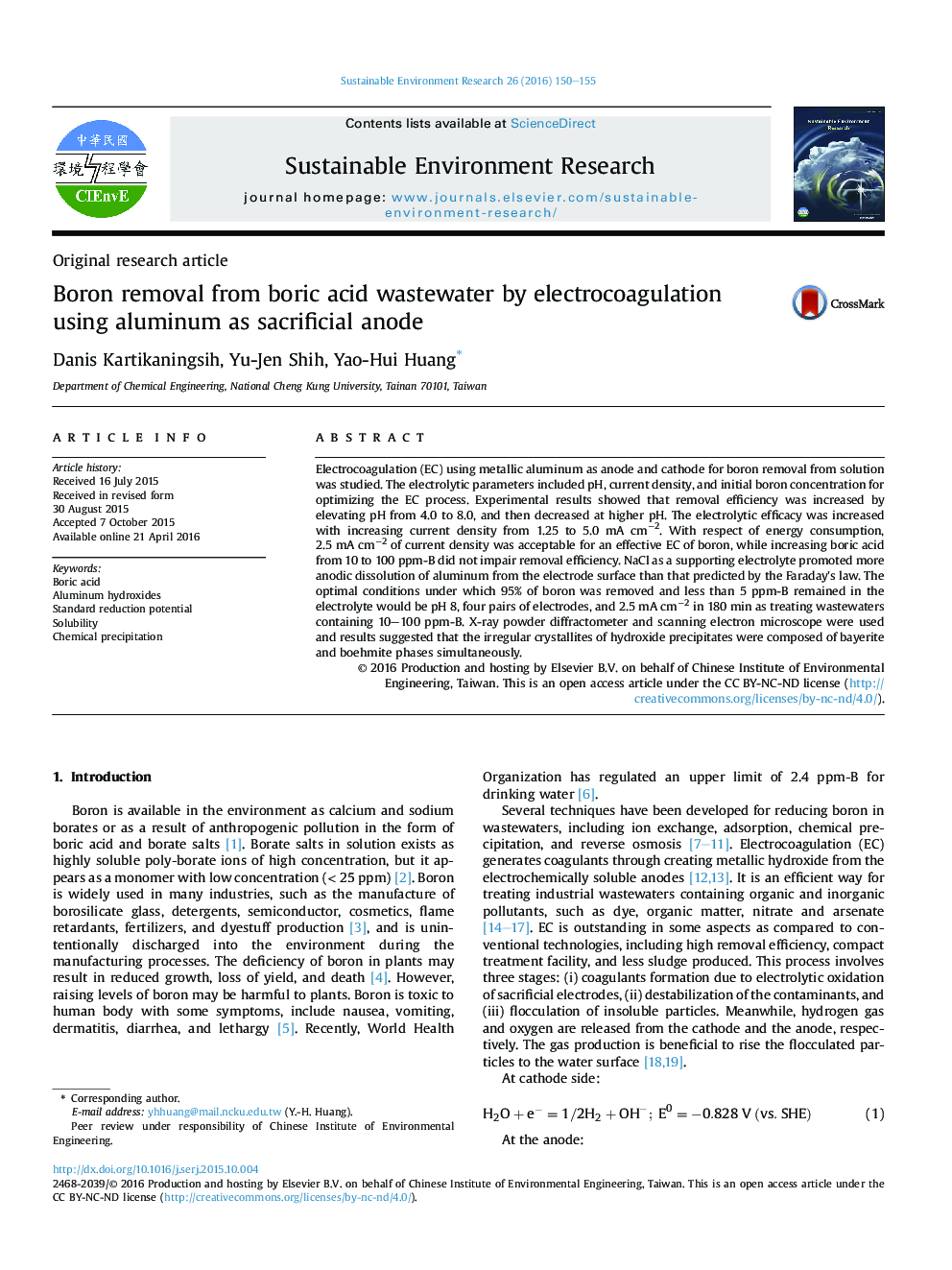| Article ID | Journal | Published Year | Pages | File Type |
|---|---|---|---|---|
| 4435370 | Sustainable Environment Research | 2016 | 6 Pages |
Electrocoagulation (EC) using metallic aluminum as anode and cathode for boron removal from solution was studied. The electrolytic parameters included pH, current density, and initial boron concentration for optimizing the EC process. Experimental results showed that removal efficiency was increased by elevating pH from 4.0 to 8.0, and then decreased at higher pH. The electrolytic efficacy was increased with increasing current density from 1.25 to 5.0 mA cm−2. With respect of energy consumption, 2.5 mA cm−2 of current density was acceptable for an effective EC of boron, while increasing boric acid from 10 to 100 ppm-B did not impair removal efficiency. NaCl as a supporting electrolyte promoted more anodic dissolution of aluminum from the electrode surface than that predicted by the Faraday's law. The optimal conditions under which 95% of boron was removed and less than 5 ppm-B remained in the electrolyte would be pH 8, four pairs of electrodes, and 2.5 mA cm−2 in 180 min as treating wastewaters containing 10–100 ppm-B. X-ray powder diffractometer and scanning electron microscope were used and results suggested that the irregular crystallites of hydroxide precipitates were composed of bayerite and boehmite phases simultaneously.
